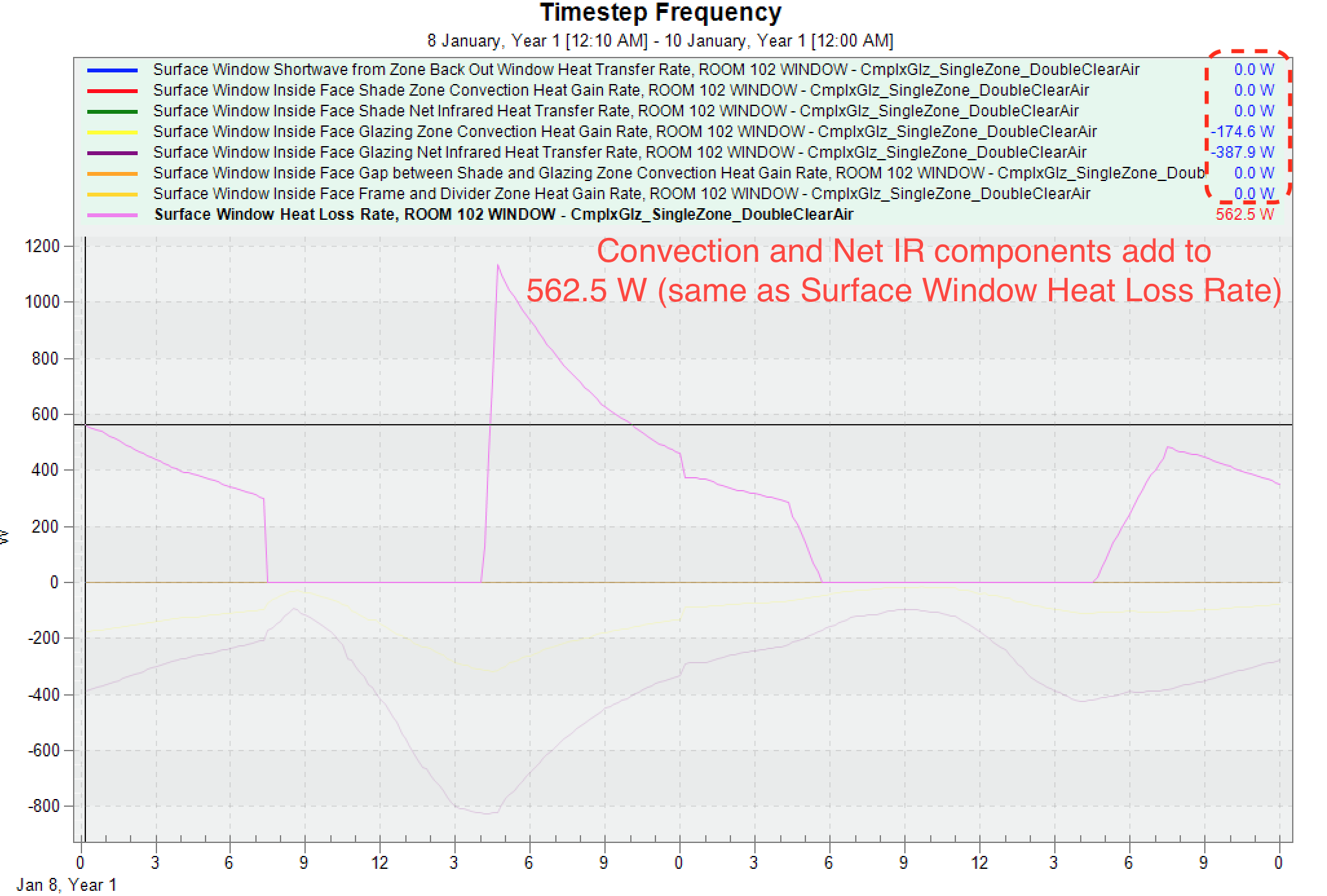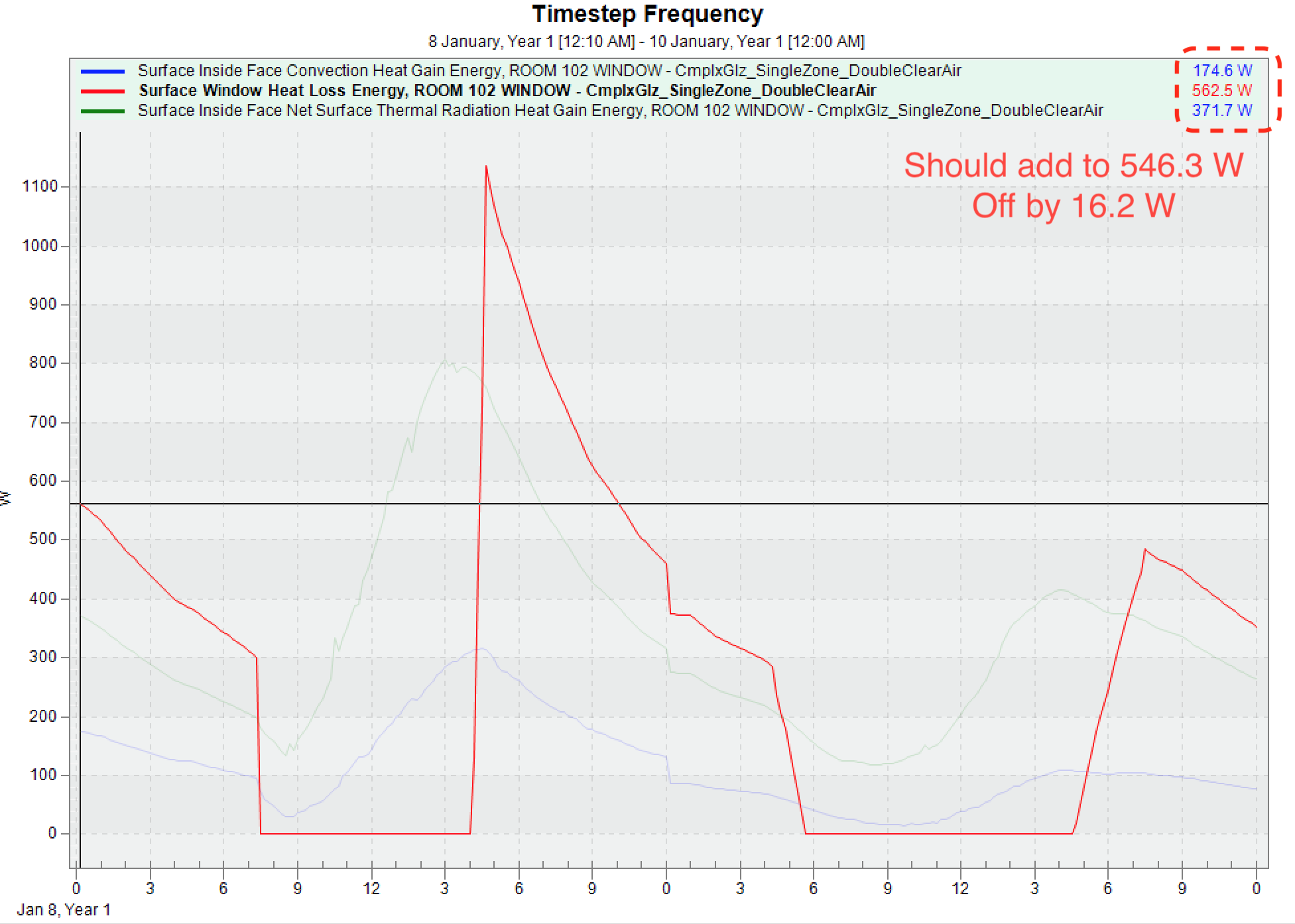According to the Input Output reference, you need to request advanced output variables in order to generate output variables for all the components of window heat loss/gain output variables. This is done using the Output:Diagnostics object with the DisplayAdvancedReportVariables option (see below).
Output:Diagnostics,
DisplayAdvancedReportVariables;
With this object added to the IDF, you will then be able to plot the seven advanced window output variables. I've taken the same * CmplxGlz_SingleZone_DoubleClearAir.idf* example file and made these changes. When you review outputs in this kind of detail, it's best to report them on a timestep frequency instead of hourly because hourly will give you the average of all timesteps that took place over each hour.

I've plotted the three output variables you were using for comparison below and can confirm that Surface Window Heat Loss Energy is NOT equal to Surface Inside Face Net Surface Thermal Radiation Heat Gain Energy + Surface Inside Face Convection Heat Gain Energy.

The convection components are equal in both images, so the difference of 16.2 $W$ appears to come from the Net IR component. This could very well be because the net IR output variables for window vs. surface are for different results.
UPDATE:
See definitions below from the Input Output Reference sections for these two output variables.
Surface Inside Face Net Surface Thermal Radiation Heat Gain Energy - the heat transferred by longwave infrared thermal radiation exchanges between the inside faces of other surfaces in the zone. The values can be positive or negative with positive indicating heat is being added to the surface’s face by thermal radiation.
Surface Window Inside Face Glazing Net Infrared Heat Transfer Rate - net exchange of infrared radiation heat transfer from the glazing to the zone in watts.
From this, it looks like the surface output variable for net IR heat transfer (first output above) accounts for heat transfer between the window inside surface and all other inside surfaces of the same zone, while the advanced window output variable for net IR heat transfer rate (second output above) may account for heat transfer from window glazing to the zone's air as well. That's just my interpretation of the wording in the documentation, to confirm that this is the case you would have to consult the EnergyPlus source code to know exactly how these output variables are calculated.








To clarify
In energy plus example also is the same: CmplxGlz_SingleZone_DoubleClearAir.idf
If we change the output variables to hourly, when there is no solar radiation (1 am), Windows Total Heat Loss Rate is a little higher than (WINDOW:Surface Inside Face Convection Heat Gain Rate) + WINDOW:Surface Inside Face Net Surface Thermal Radiation Heat Gain Rate.
Why they are not equal?
Thank you
A follow up question: how can we output the components of convection and radiation? I have two kinds of building materials and want to compare the change in radiation. But radiation is the same. How could that be true?